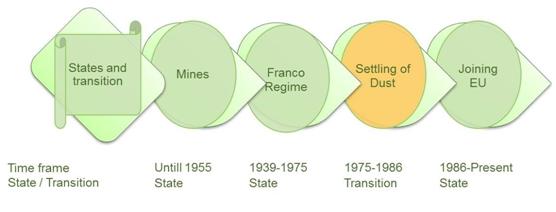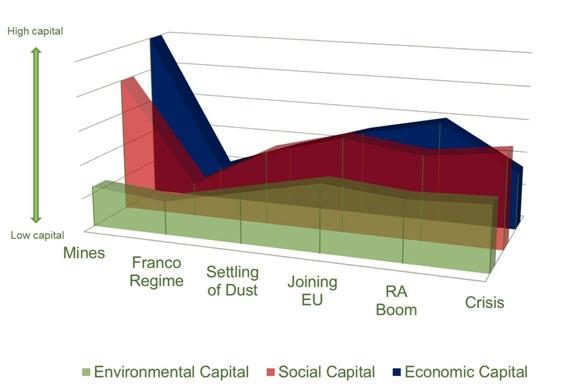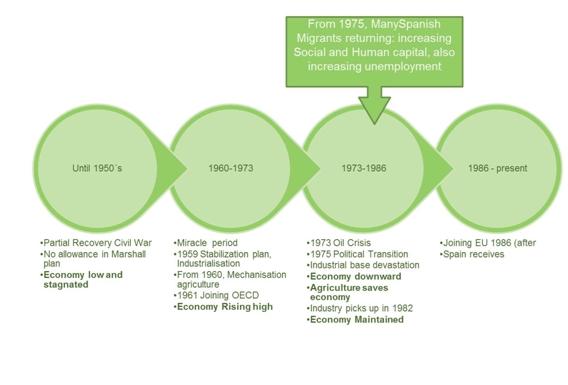Study sites in cropland
Study sites in grazing land
Study sites in forests
Evolution of Baixo Guadiana SES
| Authors: | Michiel Curfs, Anton Imeson |
| Coordinating authors: | Agostino Ferrara, Giovanni Quaranta, Rosanna Salvia |
| Editors: | Alexandros Kandelapas, Jane Brandt |
Editor's note 20Mar14: Source D332-4.1
The Baixo Guadiana has been settled since at least Neolithic times. While five thousands years ago southern Iberia was covered with oak and pine forest, deforestation and shifting land use management have led to increased soil erosion. Agriculture has been one of the most important processes affecting the natural landscape and the evolution in vegetation cover from forest to agricultural landscape that is now seen, with reforested plantations of mostly eucalyptus and pine trees with some areas of (old) Dehesa and montado systems.
Mining activity, especially since Roman times, has been a further dominant force in determining landscape, society and the economy. It has involved large-scale deforestation, erosion and contamination: the river Tinto system (Huelva province) is one of the most polluted fluvial estuarine systems in the world, and it probably has been so for thousands of years. The main ores are pyrite, copper, silver and sulfide.
Moorish social and cultural influence in the region has been strong. Although Huelva does not contain great monuments such as those seen elsewhere in Andalucía the "white villages" established by the Moors still form the architectural setting of Huelva. The Lisbon earthquake and accompanying tsunami (1755) severely affected the coastal area of the study site as well as the mainland, causing death, devastation of the natural and man-made environment but also impacting upon society and culture.
The devastation caused to vineyards by "La filoxera" (Daktulosphaira vitifoliae) at the end of the 19th century has been a determining factor in shifting cultivation from vines to olives: 17% of the surface and one thire of total agricultural lands in Andalucía are covered by olives.
The main states identified in the Baixo Guadiana study site are shown below.

- Mining state (until 1955)
- Franco Regime (1939 to 1975)
- Settling of dust transition period (1975 to 1986)
- Joining the EU (1986 to date)
These states are identified based on processes prevailing in the region and are related to the natural, social and economic capital. There is an overlap between the Mining state and the Franco Regime. Although the major and sudden change in political regime followed the Civil War and can be thought of as a rupture, its impacts in the rural area of the Baixo Guadian were very gradual due to the area's remoteness and the prevailing SES, which revolved around mining, and was unaffected by the dramatic change in political regime. In contrast, the end of the Franco Regime while also entailing a very sudden change (rupture), brought about a transition period during which it was a new equilibrium was sought in Spain and the study site. The last state commences with accession to the EU in 1986.


| More details ... each period is fully described in the following articles |
Mines state (until 1955)
Franco Regime (1939 to 1975)
Settling of dust transition period (1975 to 1986)
Joining the EU (1986 to date)
